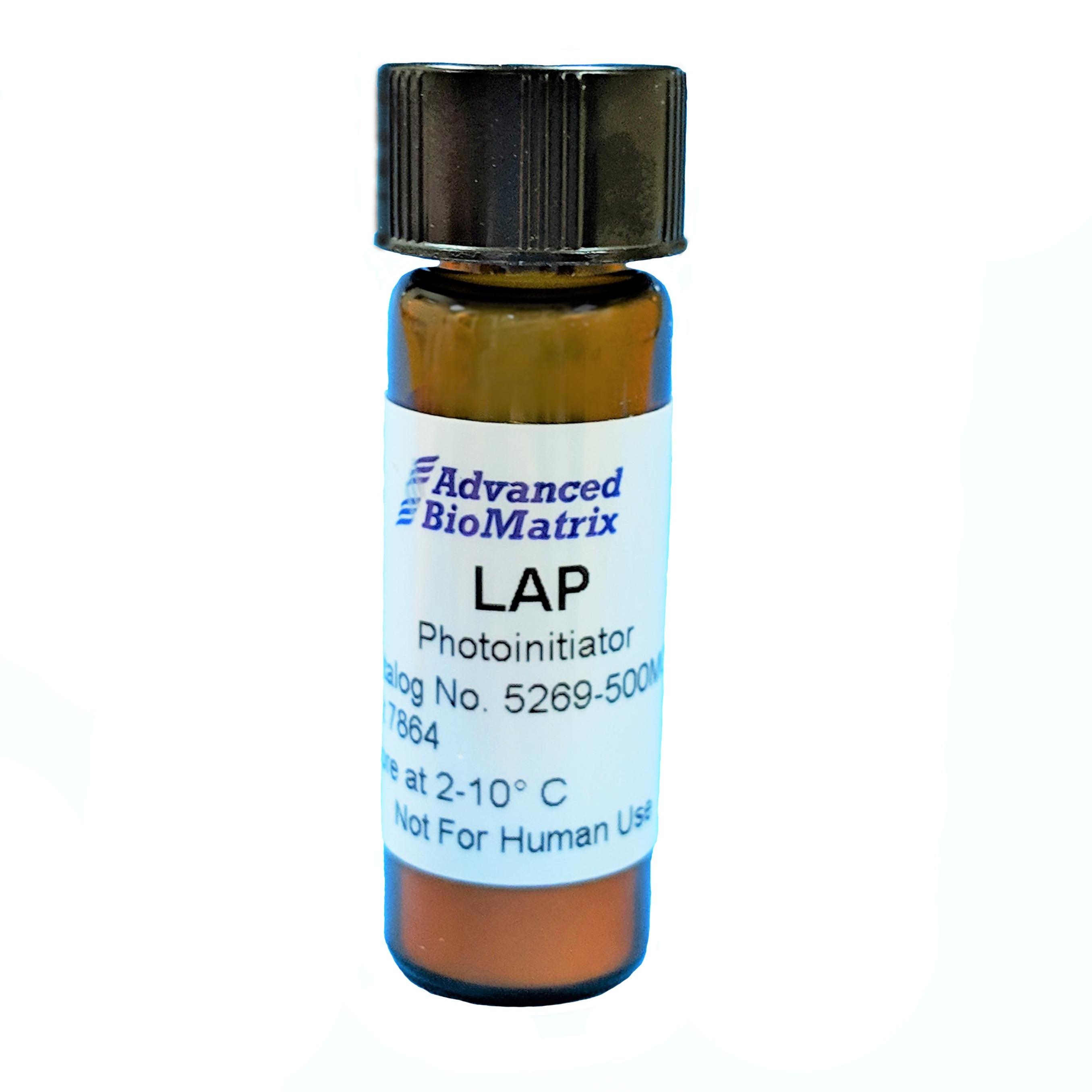-
Collagen
-
Type I - Atelocollagen
- PureCol® Solution, 3 mg/ml (bovine) #5005
- Nutragen® Solution, 6 mg/ml (bovine) #5010
- FibriCol® Solution, 10 mg/ml (bovine) #5133
- PureCol® EZ Gel, Solution, 5 mg/ml (bovine) #5074
- PureCol® Lyophilized, 15 mg (bovine) #5006
- VitroCol® Solution, 3 mg/ml (human) #5007
- VitroCol® Lyophilized, 15 mg (human) #5008
-
Type I - Telocollagen
- TeloCol®-3 Solution, 3 mg/ml (bovine) #5026
- TeloCol®-6 Solution, 6 mg/ml (bovine) #5225
- TeloCol®-10 Solution, 10 mg/ml (bovine) #5226
- RatCol® for 3D gels, Solution, 4 mg/ml (rat) #5153
- RatCol® High Concentration, Solution, 10 mg/ml (rat)
- RatCol® lyophilized, 100 mg (rat)
- RatCol® for Coatings, Solution, 4 mg/ml (rat) #5056
- Type I - Insoluble Collagen
- Type I - Bioinks
- Type II Collagen
- Type III Collagen
- Type IV Collagen
- Collagen Standard
- PureCol® Collagen Coated Plates
- Collagen Scaffolds
- Collagen Hybridizing Peptides
-
Type I - Atelocollagen
- Tunable Stiffness
- CytoSoft® Rigidity Plates
-
Bioprinting
- Support Slurry for FRESH Bioprinting
- Collagen Bioinks for Extrusion Bioprinting
- GelMA Bioinks for Extrusion Bioprinting
- Photoinitiators
- Bioinks and Components for DLP Bioprinting
- Bioink Components
- Methacrylated Collagen
- Methacrylated Gelatin
- Methacrylated Hyaluronic Acid
- Diacrylates
- Methacrylated Polysaccharides
-
3D Hydrogels
- Thermoreversible Hydrogel
- Silk Fibroin
-
Type I Collagen for 3D Hydrogels
- PureCol® Solution, 3 mg/ml (bovine) #5005
- Nutragen® Solution, 6 mg/ml (bovine) #5010
- FibriCol® Solution, 10 mg/ml (bovine) #5133
- PureCol® EZ Gel, Solution, 5 mg/ml (bovine) #5074
- VitroCol® Solution, 3 mg/ml (human) #5007
- TeloCol®-3 Solution, 3 mg/ml (bovine) #5026
- TeloCol®-6 Solution, 6 mg/ml (bovine) #5225
- TeloCol®-10 Solution, 10 mg/ml (bovine) #5226
- RatCol® for 3D gels, Solution, 4 mg/ml (rat) #5153
- HyStem® Thiolated Hyaluronic Acid
- Methacrylated Collagen
- Methacrylated Gelatin
- Methacrylated Hyaluronic Acid
- Diacrylates
- Collagen Sponges
- Methacrylated Polysaccharides
- Extracellular Matrices
- HyStem / Hyaluronic Acid
-
Adhesion Peptides / Proteins
-
Recombinant Adhesion Proteins
- CD2, 0.5 mg/ml #5086
- CDH3, 0.5 mg/ml #5124
- CDH13, 0.5 mg/ml #5125
- CD14, 0.5 mg/ml #5089
- CDH18, 0.5 mg/ml #5090
- CD40, 0.5 mg/ml #5093
- CD86, 0.5 mg/ml #5096
- CD164, 0.5 mg/ml #5100
- CD270, 0.5 mg/ml #5127
- CD274, 0.5 mg/ml #5126
- CD276, 0.5 mg/ml #5123
- E-Cadherin (CD324), 0.5 mg/ml #5085
- ICAM2, 0.5 mg/ml #5107
- Adhesion Peptides
- Collagen Hybridizing Peptides
-
Recombinant Adhesion Proteins
- Reagents
- Assays
LAP
Visible Light Photoinitiator (405nm)
Catalog #5269
LAP
Visible Light Photoinitiator (405nm)
Catalog #5269
LAP is a water soluble photoinitiator for use in the polymerization of hydrogels or bioinks. LAP is photocrosslinked with 405nm blue light and is often preferred over Irgacure 2959 due to improved cytocompatibility.
Product Description
LAP is a water soluble, cytocompatible, photoinitiator for use in the polymerization of hydrogels or bioinks. This photoinitator is preferred over Irgacure 2959 for biological applications due to its increased water solubility, increased polymerization rates with 365 nm light, and absorbance at 400 nm allowing for polymerization with visible light. The improved polymerization kinetics enable cell encapsulation at reduced initiator concentration and longer wavelength light, which has been shown to reduce initiator toxicity and increase cell viability.
This LAP product is considered non-sterile. Adding antibiotics to your cell culture system, or sterile filtering is recommended. To sterile filter, resuspend the desired quantity of LAP and filter through small 0.2 micron button filters. Use the sterile photoinitiator within 2 weeks.
This product comes with 500 mg of dry powder.
Storage/Stability:
The product ships on gel packs. Store the product at 2-8°C. Weigh out the required amount of powder to solubilize. Once solubilized, use within 2 weeks.
Dry powder (non-solubilized) is stable for >1 year at 2-8°C.
Directions for Use
- Calculate the volume of photoinitiator to add by multiplying the volume of hydrogel solution or bioink by 0.02. If the resulting number is 200 ul, for example, you will add 200 ul of LAP.
- Solubilize the required amount of LAP (per step 1) at a concentration of 17 mg/ml in 1X PBS or cell culture media.
- Add the calculated volume of photoinitiator to the required volume of hydrogel or bioink solution and mix thoroughly.
- Add your cells to the HA solution if desired.
- Dispense or bioprint your solution into the desired cultureware (i.e. 6-well plate, 48-well plate).
- For photocrosslinking, place the hydrogel solution directly under a 405 nm light crosslinking source.
- You may tune photoinitiator concentration, light intensity and photocrosslinking time to customize final hydrogel stiffness.
Product Q & A
We have recently been using this off-the-shelf 405nm Blue Light from Amazon (Click Here).
For our initial LAP crosslinking studies with methacrylated hydrogels, this lamp seems to work great, but we are working on validating this lamp for tissue engineering and cell culture purposes (confirming the wavelength, light intensity, etc...).
Product Certificate of Analysis
No result for .
Product Disclaimer
This product is for R&D use only and is not intended for human or other uses. Please consult the Material Safety Data Sheet for information regarding hazards and safe handling practices.


